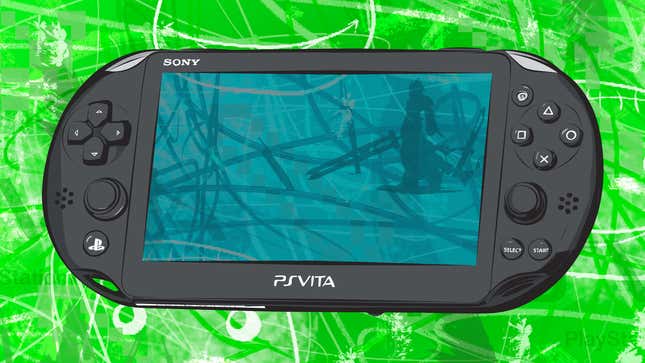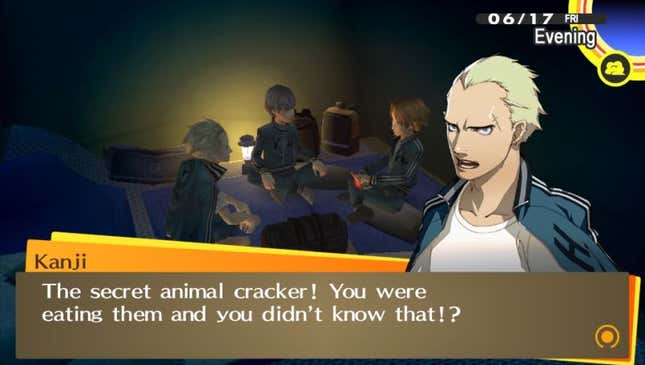
On February 15, 2012, Sony of America launched the PlayStation Vita, a powerhouse portable that they promised would deliver “console-quality gaming” to commutes everywhere. Nearly four years later, it’s safe to say they failed. But the Vita is a great machine—even without Sony’s help.
This is part of our 2015 “State of” series, a look at how the five major consoles (and PC) are doing this year.
In 2015, the Vita appears to be in a terrible place. Sales have been atrocious, marketing is non-existent, and Sony has all but admitted that they’ve stopped supporting the system. Just look at the Vita’s conspicuous absence from any Sony press conferences. Whether it’s due to the rise of mobile gaming or Sony’s other major Vita screw-ups—like those exorbitantly priced memory cards—the Vita just hasn’t been able to reach a substantial audience. By any account it’s a commercial failure and has been since it launched.
Yet not all is doom and gloom for the PSP’s successor. If you look past the dismal sales, you’ll find a rather fine game machine that’s become the system of choice for fans of Japanese games, especially RPGs. It’s also chock full of indie gems, solid ports, and old-school classics. Anyone hunting for the big-budget shooters and open-world adventures that Sony originally promised will want to look elsewhere, but if you like more interesting, niche games, the Vita might be a perfect fit.
For example, there’s the Danganronpa series, a set of excellent visual novels that cross Phoenix Wright with Battle Royale to delightful results. There’s Gravity Rush, a unique action-adventure game where you manipulate gravity to explore a big floating city. Mysteries like Steins;Gate and Zero Escape: Virtue’s Last Reward have kept me up until 3am on more than a few occasions, and the Vita’s also got great ports of indie games like Hotline Miami and Spelunky. Larger games like Grim Fandango and Final Fantasy X are also nice fits on Sony’s handheld.

One of the Vita’s biggest assets is something that Sony barely supports: PlayStation Classics. Although the library isn’t all that thorough, the PlayStation Network does sell a number of great PS1 and PSP games that you can play or replay on Vita. The system is perfect for these old games, especially if you do some minor button remapping. Sony could’ve done much more to improve the emulation—a “fast forward” button sure would be nice—but it’s hard to argue with Suikoden II on the go. One PSP role-playing game, Legend of Heroes: Trails in the Sky, is my favorite JRPG of the decade so far and playable on Vita via PS Classics.
If you’re anything like me, you may find yourself dropping a couple hundred bucks on games you already own on older systems, just so you can play them again on the subway or before bed:

And I haven’t even mentioned Personas 3 and 4, both of which play best on the Vita and will suck up some 200 hours of your free time.
Point is, there are a lot of good games here. If you’re a PlayStation 4 owner, you can also use a relatively new feature called Remote Play to mirror your PS4 games on the Vita. The lag and imprecise controls can make it difficult to play, say, competitive Battlefront, but if you want to do some RPG grinding while watching TV, this is a nice little bonus.
The Vita comes in two different models. There’s the original PCH-1000, which still holds up perfectly today, and the newer PCH-2000, which gains some battery life by ditching the OLED screen for a cheaper LCD version. Both models feel very good, although the back touchscreen can be something of a nuisance. The front screen is fragile—my first Vita shattered just from bumping around in my bag—so getting a case is a must.
Also a must: Getting enough storage space for your games, which is a pain in the ass thanks to Sony’s unfortunate decision to force Vita owners to buy and use their proprietary memory cards. You basically need a memory card to do anything worthwhile on the Vita, so getting one of these machines means sucking it up and dropping a hilarious amount of money on a comparatively tiny SD card. A 32GB Vita memory card will cost you a whopping $100, although Amazon Prime is selling it for $60 these days.

Proprietary goofery aside, the Vita remains a great gaming machine. It may have never lived up to promises of console gaming on the go. To Sony, it may be a “legacy platform,” as CEO Andrew House called it earlier this year. But somehow, Vita has turned into a must-have for RPG fans. Even if you’re not into role-playing games, the system’s got a lot to offer, which is why it’s such a shame that Sony’s mishandled it so badly.
As we head into 2016, it’s clear that Sony has no plans to support Vita beyond the bare minimum. The Vita has plateaued, and our notion of the console is unlikely to change in 2016, or perhaps ever again. Yet it remains a solid piece of gaming hardware, and that’s not going to change, either.
You can reach the author of this post at jason@kotaku.com or on Twitter at @jasonschreier.
Illustration by Sam Woolley.